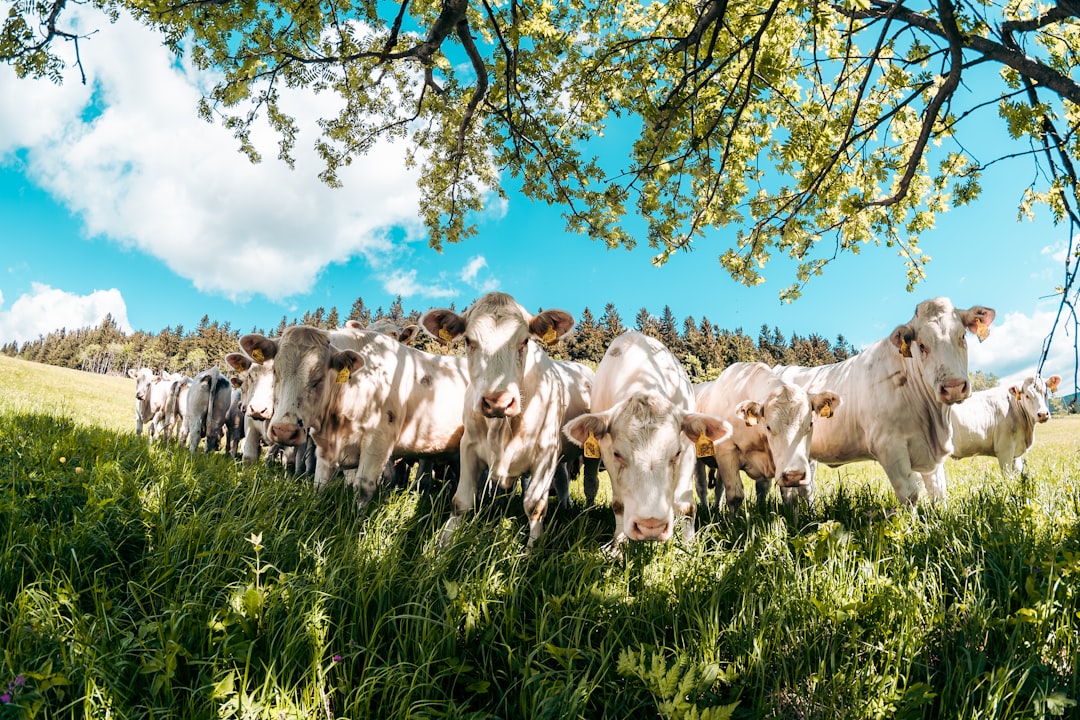Animal physiology forms the backbone of effective livestock management, shaping practices that optimize health, productivity, and sustainability. By unraveling the intricacies of biological processes like lactation, reproduction, and nutrient metabolism, farmers can implement strategies that align with natural systems while meeting modern demands.
Lactation: Anatomy, Hormones, and Metabolic Demands
Mammary Biology and Hormonal Control
The dairy cow’s udder comprises four mammary glands, each containing lobules and ducts lined with milk-secreting epithelial cells. Lactation begins with lactogenesis, driven by hormones like prolactin, cortisol, and insulin. Prolactin stimulates milk synthesis, while oxytocin triggers myoepithelial cell contractions to release milk. During pregnancy, rising estrogen and progesterone prepare the udder, with full secretory capacity achieved post-calving.
Metabolically, lactation prioritizes nutrient partitioning to the mammary gland, often at the expense of other bodily functions. High-yielding cows experience severe negative energy balance (NEB) postpartum, mobilizing adipose tissue to meet energy demands. This metabolic load increases susceptibility to ketosis and mastitis, underscoring the need for careful transition-period management.
Husbandry Implications:
-
Monitor body condition scores pre- and post-calving to mitigate NEB risks.
-
Use precision tools like in-line milk analyzers to track health indicators (e.g., fat-protein ratios).
-
Optimize diets with glucogenic precursors (e.g., propionate) to support glucose synthesis.
Reproduction: Balancing Fertility and Metabolic Health
Postpartum Challenges
The early lactation period’s metabolic stress disrupts reproductive efficiency. Negative energy balance reduces insulin and IGF-1 levels, delaying ovarian cyclicity. Elevated non-esterified fatty acids (NEFAs) and ketones further impair oocyte quality and uterine health.
Husbandry Implications:
-
Implement controlled energy diets during the dry period to prevent overconditioning.
-
Use hormonal synchronization protocols to restart estrous cycles in cows with prolonged NEB.
-
Monitor biomarkers like NEFAs and β-hydroxybutyrate to identify at-risk individuals.
Nutrient Partitioning and Digestive Adaptations
Gastrointestinal and Metabolic Adaptations
During lactation, cows undergo homeorhetic shifts, redirecting nutrients toward milk synthesis. The gastrointestinal tract enlarges to enhance nutrient absorption, while hepatic gluconeogenesis increases by 50% to meet mammary glucose demands. However, excessive lipolysis can overwhelm metabolic pathways, leading to hepatic lipidosis.
Husbandry Implications:
-
Prioritize highly digestible forage to maximize dry matter intake postpartum.
-
Supplement rumen-protected choline to support liver function during NEB.
-
Balance rations for amino acids (e.g., methionine) to improve milk protein yield.
Technological Advances in Physiological Management
-
Precision Livestock Farming
-
Robotic milking systems track milk composition and yield, enabling early disease detection.
-
Wearable sensors monitor real-time metrics like rumination and body temperature.
-
-
Genetic and Epigenetic Tools
-
CRISPR-edited cattle with heat-tolerant "slick" genes reduce heat stress impacts.
-
Epigenetic programming studies reveal how in utero nutrition affects lifelong productivity.
-
-
Circadian Rhythm Optimization
-
Aligning feeding schedules with natural circadian rhythms improves nutrient utilization.
-
Melatonin supplementation enhances reproductive efficiency in seasonal breeders like sheep.
-
Conclusion
Understanding animal physiology bridges the gap between biological complexity and practical husbandry. From mitigating metabolic disorders through tailored nutrition to leveraging gene-editing technologies, informed management practices enhance both animal welfare and farm profitability. As research continues to unravel physiological networks, integrating these insights will be key to building resilient, sustainable livestock systems.
Citations:
- https://www.ncbi.nlm.nih.gov/books/NBK218174/
- https://www.veterinariadigital.com/en/articulos/physiology-of-lactation-in-cattle/
- https://www.frontiersin.org/journals/animal-science/articles/10.3389/fanim.2021.689345/full
- https://pmc.ncbi.nlm.nih.gov/articles/PMC10289513/
- https://pubmed.ncbi.nlm.nih.gov/33672703/
- https://www.cabidigitallibrary.org/doi/pdf/10.5555/20083014674
- https://www.animal-reproduction.org/article/5b5a6057f7783717068b46e5/pdf/animreprod-9-3-260.pdf
- https://pmc.ncbi.nlm.nih.gov/articles/PMC7552204/
- https://extension.umn.edu/dairy-nutrition/ruminant-digestive-system
- https://www.thecattlesite.com/articles/2276/partitioning-of-nutrients-during-lactation-in-dairy-animals
- https://www.jabbnet.com/article/10.31893/2318-1265jabb.v6n3p62-71/pdf/jabbnet-6-3-62.pdf
- https://funaab.edu.ng/funaab-ocw/opencourseware/Physiology%20of%20Lactation.pdf
- https://opentextbc.ca/biology/chapter/15-3-digestive-system-processes/
- https://www.idpublications.org/wp-content/uploads/2014/07/STRESS.pdf
- https://pmc.ncbi.nlm.nih.gov/articles/PMC8814174/

Comments
No comments yet. Be the first to comment!
You must be logged in to comment. Login